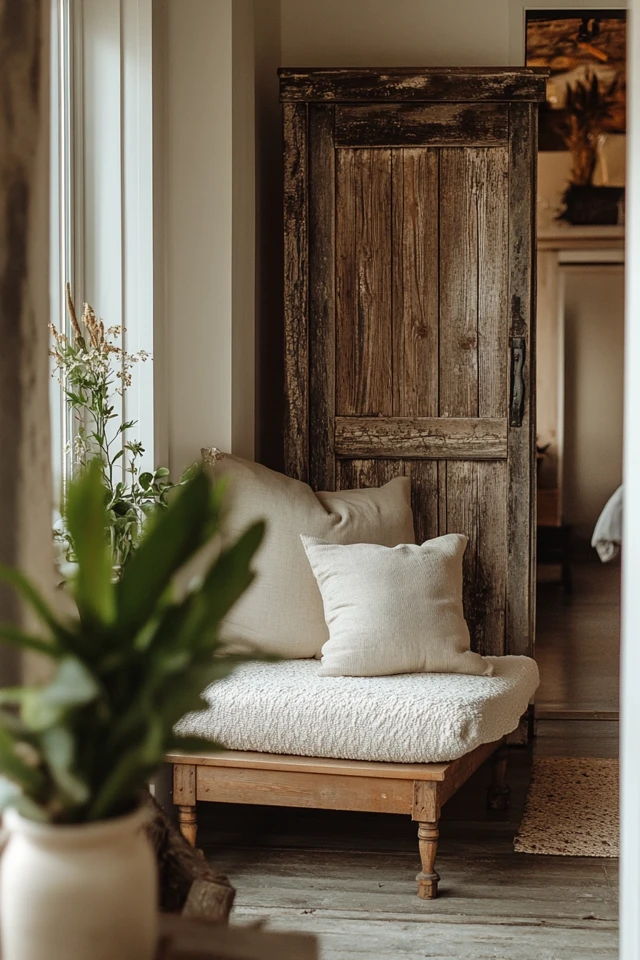Introduction
Rustic textures are the backbone of authentic farmhouse design. They’re what make the style so warm, inviting, and lived-in. Whether it’s the rough grain of reclaimed wood, the softness of woven textiles, or the industrial edge of aged metal, these textures give farmhouse interiors their timeless appeal. I fell in love with the magic of rustic textures while renovating my first home. The blank white walls and brand-new (read: soulless) furniture lacked personality, and I couldn’t figure out what was missing—until I brought in an old wooden bench with a distressed finish. Suddenly, the space came alive. It wasn’t just about how it looked; it was how it felt.
Since then, I’ve made rustic textures a priority in every farmhouse project I take on. They’re the secret ingredient that ties everything together, creating depth and authenticity in a space. In this guide, I’ll walk you through how to use rustic textures to create a genuine farmhouse feel in your home. From materials like wood and stone to textiles and decor, you’ll learn how to layer textures for a look that’s as cozy as it is stylish.
Why Texture Matters in Farmhouse Design
Texture isn’t just about the way things feel—it’s about the way they make a room feel. Rustic textures add depth, character, and warmth, making your home feel more inviting and lived-in.
How Rustic Textures Enhance Farmhouse Style
- Create Contrast: Pairing rough textures with smooth ones creates visual interest. Think a sleek marble countertop against a reclaimed wood island.
- Add Warmth: Natural materials like wood and stone ground the space, making it feel cozy and organic.
- Tell a Story: Every scratch, patina, and grain in rustic materials adds character and history to your home.
Pro Tip: Balance is key—too much texture can feel overwhelming, while too little can make a space feel flat.
The Foundation of Rustic Textures: Materials
1. Reclaimed Wood
Reclaimed wood is a farmhouse staple, thanks to its weathered appearance and natural imperfections.
- Where to Use It:
- Dining tables, coffee tables, or consoles.
- Exposed ceiling beams.
- Shiplap walls or accent panels.
- Why It Works: Its knots, grains, and worn edges bring an organic, lived-in feel to any room.
Pro Tip: Mix reclaimed wood with modern elements, like metal or glass, for a balanced look.
2. Natural Stone
Stone adds an earthy, timeless element to farmhouse interiors.
- Where to Use It:
- Fireplaces clad in stone.
- Kitchen backsplashes or countertops.
- Stone tile flooring in entryways or mudrooms.
- Why It Works: Its rugged texture contrasts beautifully with softer elements like textiles or wood.
3. Brick
Exposed brick walls are a dream for farmhouse enthusiasts. If you don’t have brickwork in your home, don’t worry—faux brick panels can replicate the look.
- Where to Use It:
- Kitchen walls or backsplashes.
- Living room accent walls.
- Surrounds for fireplaces.
- Why It Works: The irregular surface and warm tones of brick add depth and character.
4. Aged Metal
Metal accents with a patina or industrial finish are another hallmark of farmhouse design.
- Where to Use It:
- Wrought iron light fixtures.
- Galvanized steel planters or trays.
- Copper or brass hardware and fixtures.
- Why It Works: The cool tones and weathered finishes of metal balance the warmth of wood and textiles.
Layering Rustic Textiles
Rustic textiles add softness and comfort to farmhouse interiors, creating a cozy, lived-in vibe.
1. Woven Rugs
Natural fiber rugs like jute, sisal, or wool bring texture to your floors.
- Where to Use Them:
- Layer a jute rug under a patterned wool rug in the living room.
- Use a sisal runner in hallways or kitchens for durability.
2. Chunky Knit Throws
A chunky knit throw draped over a sofa or bench instantly adds warmth and texture. Choose neutral tones or soft earth colors for a farmhouse feel.
3. Linen Curtains
Lightweight and slightly wrinkled, linen curtains exude farmhouse charm. Let them pool slightly on the floor for a relaxed look.
4. Pillows with Texture
Mix and match pillows with different textures, like linen, burlap, and faux fur, for a cozy, layered effect.
Pro Tip: Stick to a neutral or muted color palette to keep the look cohesive.
Rustic Textures in Furniture and Decor
1. Distressed Finishes
Furniture and decor with distressed finishes evoke a sense of age and history.
- Look for pieces with chipped paint, uneven edges, or faded stains.
- Distressed white or gray finishes are especially popular in farmhouse design.
2. Wicker and Rattan
Natural woven materials like wicker and rattan are perfect for adding texture to farmhouse interiors.
- Ideas: Woven baskets, pendant lights, or chair seats.
- Why It Works: These materials add an organic, airy element to the space.
3. Farmhouse Storage
Use rustic textures in storage solutions for both function and style.
- Galvanized Bins: Great for organizing pantry items or craft supplies.
- Wooden Crates: Perfect for blankets, toys, or firewood.
- Peg Rails: A simple, stylish way to store coats, hats, or kitchen tools.
Styling Tips for Layering Rustic Textures
1. Mix Rough and Smooth
Pair rough textures (like reclaimed wood) with smoother ones (like polished metal or glass) to create contrast and balance.
2. Vary the Scale
Use a mix of large, bold textures (like a brick wall) with smaller, subtle ones (like woven coasters) to keep the space dynamic.
3. Stick to a Cohesive Palette
While you can mix textures freely, keeping the color palette cohesive ensures the look feels intentional. Neutral tones work best for farmhouse style.
4. Don’t Forget the Ceiling
Ceilings are often overlooked, but adding rustic beams or wood planks can enhance the farmhouse vibe dramatically.
Picture Gallery
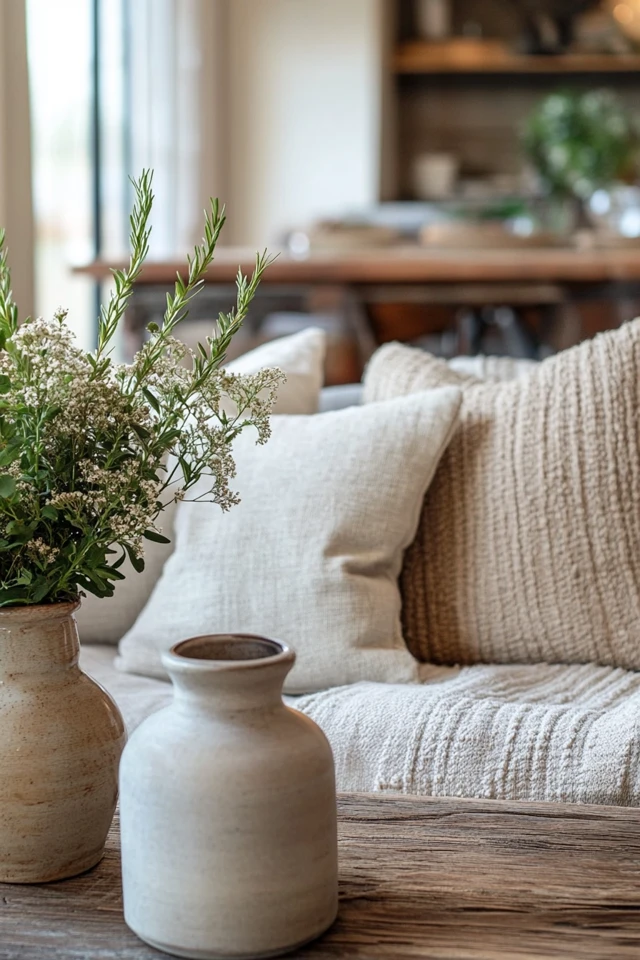
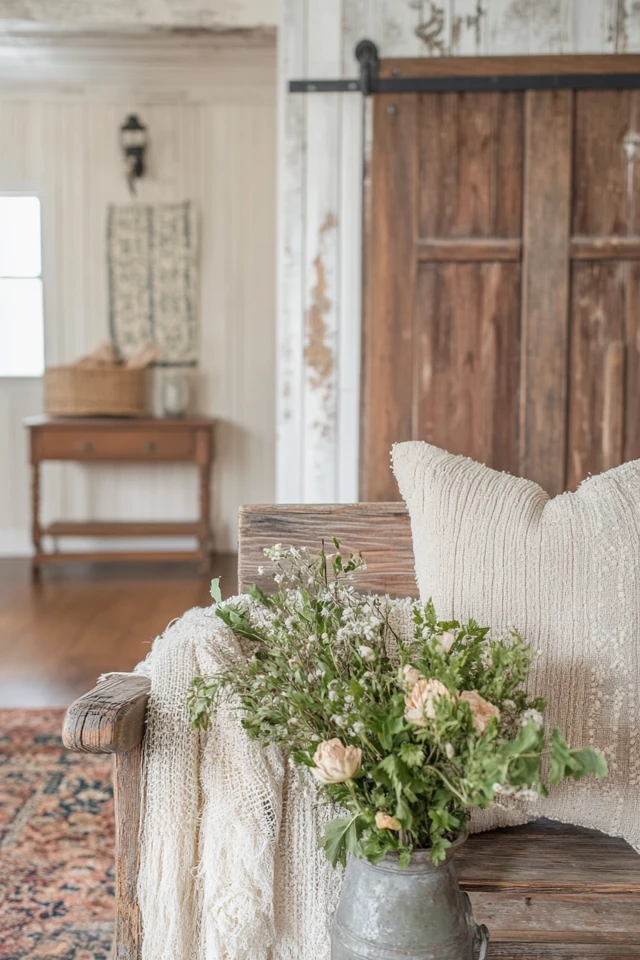
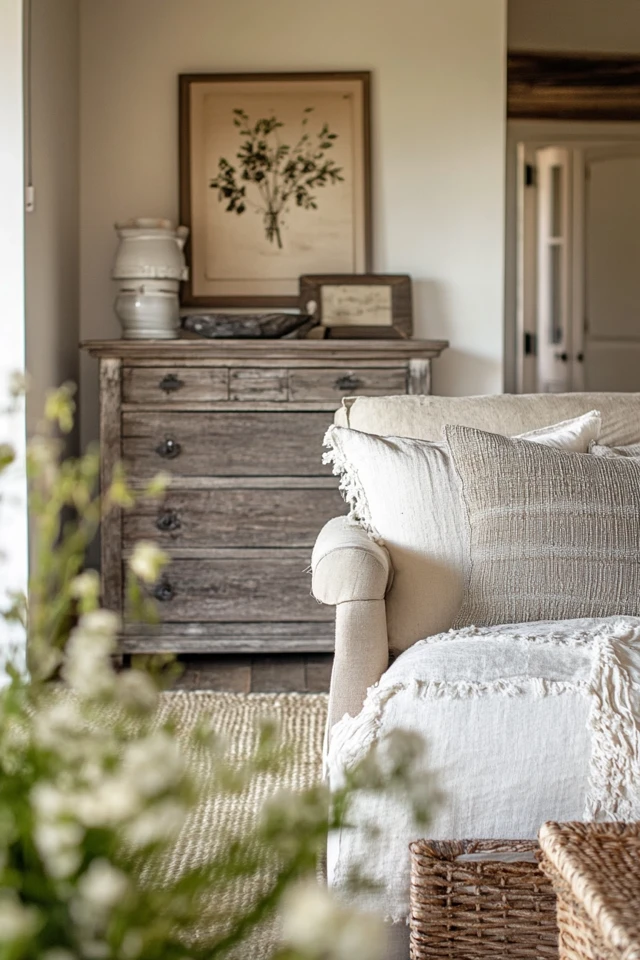
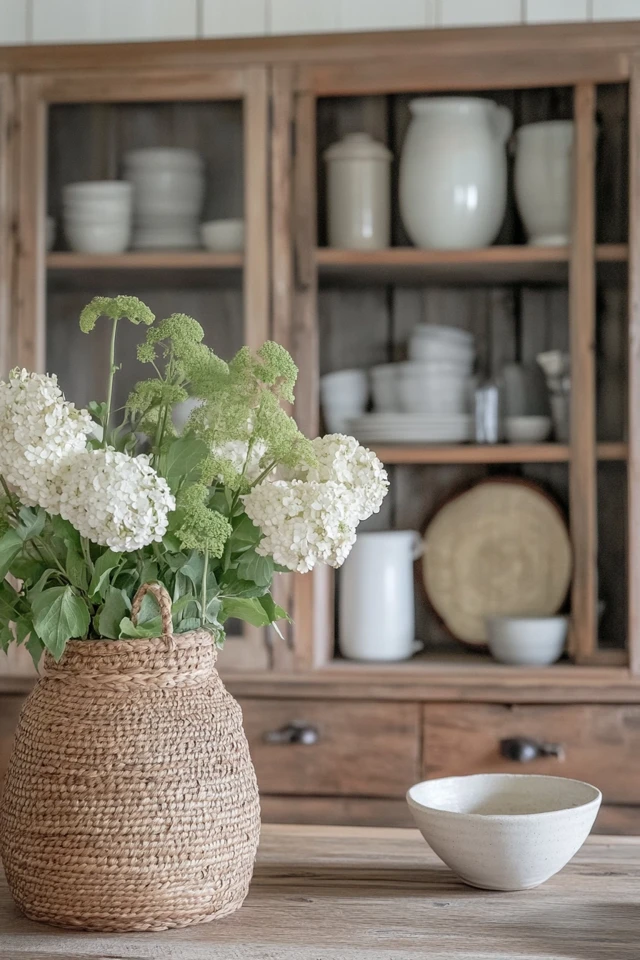
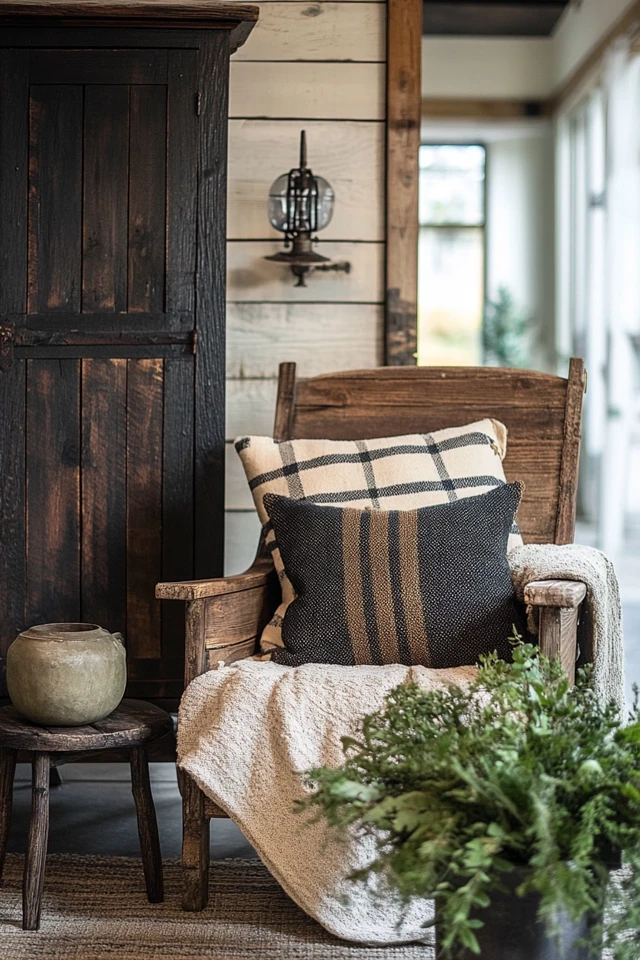
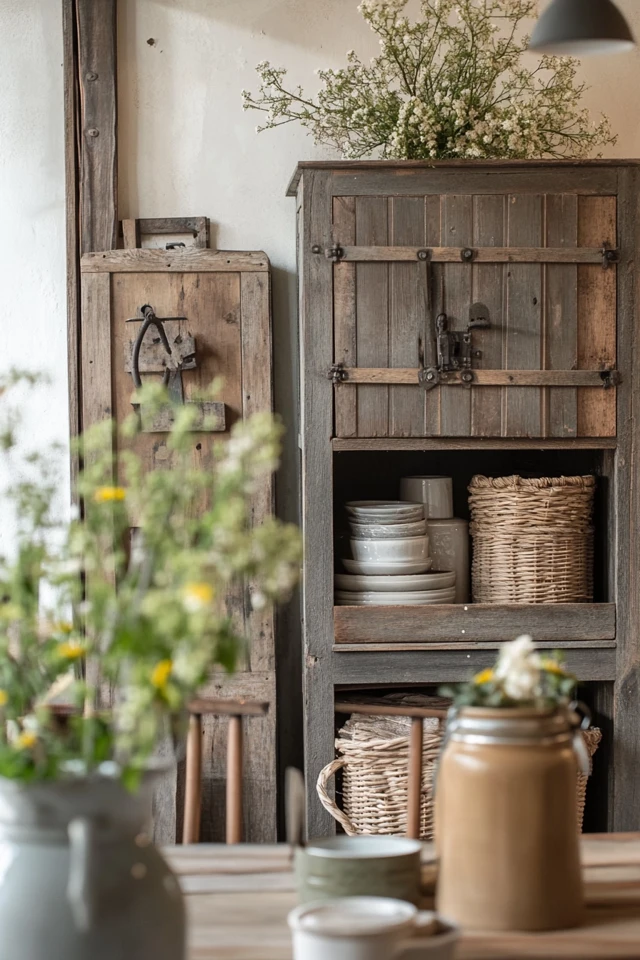
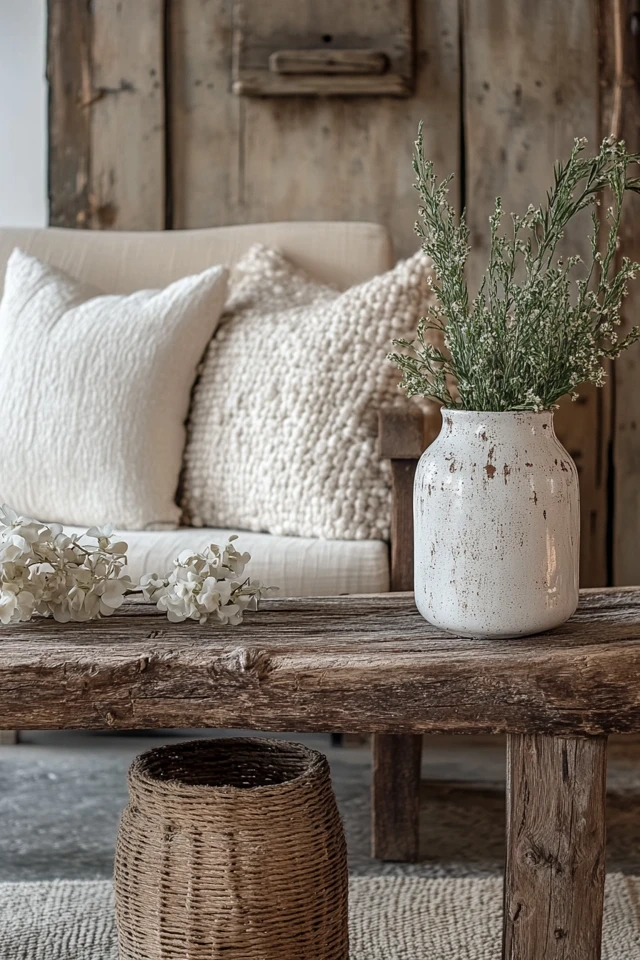
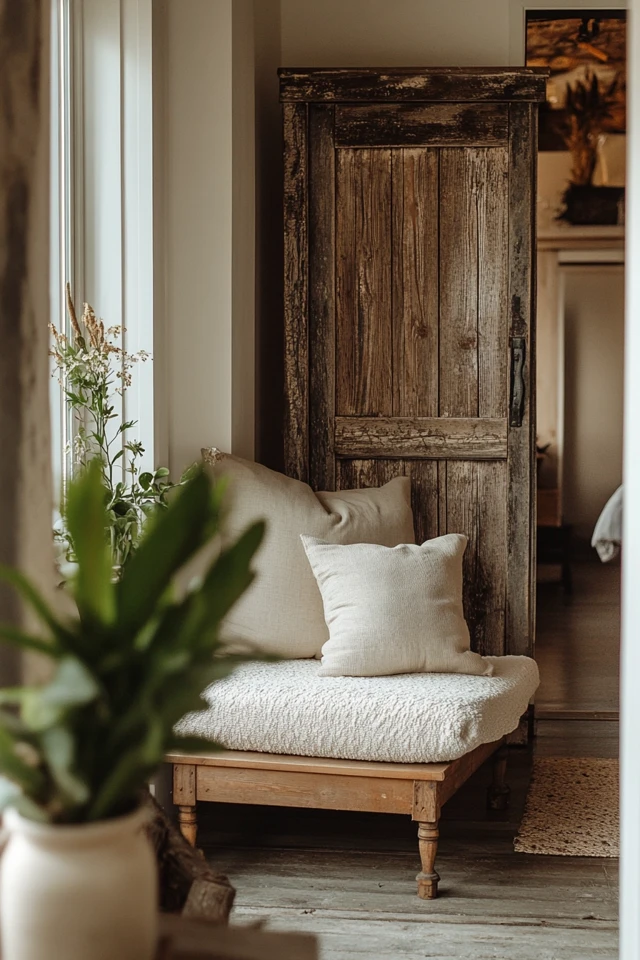
Mistakes to Avoid
1. Overloading on Texture
Too many bold textures in one space can feel overwhelming. Balance heavier elements with smoother, simpler ones.
2. Skipping Contrast
If all your textures are similar (e.g., all wood or all metal), the space can feel flat. Add variety for a more dynamic look.
3. Neglecting Functionality
While texture is important, your pieces should also be practical. Choose items that enhance your lifestyle as well as your decor.
Conclusion
Rustic textures are the heart and soul of farmhouse design. They add warmth, depth, and a sense of history to your home, making it feel both timeless and welcoming. From reclaimed wood and natural stone to woven textiles and aged metal, the possibilities for incorporating texture are endless.
For me, adding rustic textures is like putting the finishing touches on a painting—it’s the element that brings everything to life. Every scratch, grain, and patina tells a story, creating a space that feels truly authentic. Whether you’re decorating an entire farmhouse or just adding a few touches to your existing space, let texture guide you.
So grab that distressed wood console, layer on a chunky knit throw, and let your creativity shine. With the tips in this guide, you’ll create a farmhouse-inspired home that feels as genuine as it looks.
FAQ
1. What’s the easiest way to add rustic textures to my home?
Start small with items like woven baskets, reclaimed wood shelves, or textured rugs. These elements are easy to incorporate and make a big impact.
2. Can I mix rustic textures with modern design?
Absolutely! Rustic textures like wood and metal pair beautifully with sleek, modern finishes for a balanced, contemporary look.
3. How do I prevent my space from feeling too rough or unfinished?
Balance rough textures with softer ones, like linen curtains or plush pillows, to keep the space cozy and inviting.
4. What colors work best with rustic textures?
Neutral tones like white, beige, gray, and muted earth tones highlight the natural beauty of rustic materials.
5. Where can I find rustic decor on a budget?
Thrift stores, flea markets, and DIY projects are great sources for affordable rustic pieces. Look for items with natural materials and aged finishes.

